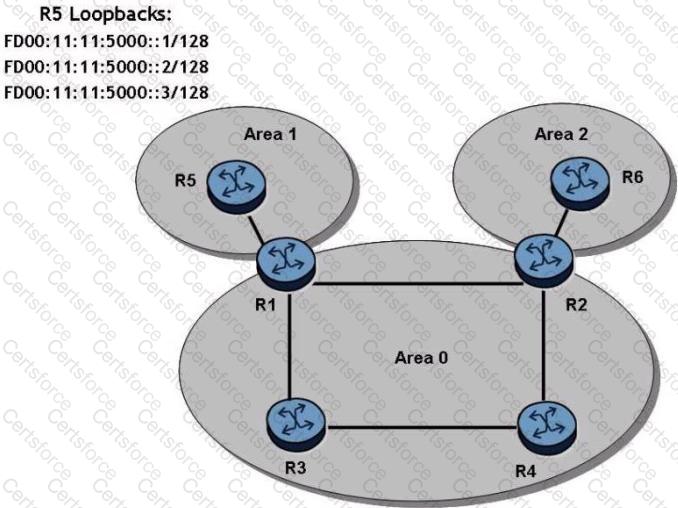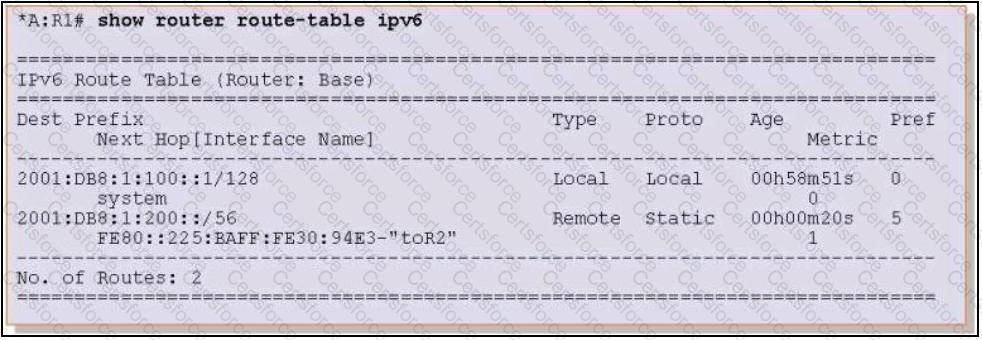Click on the exhibit.

Router R5 is advertising the three loopbacks prefixes shown in OSPFv3. The following command is executed on router R1: R1# configure router ospf3 area 0 area-range FD00:11:11:5000:764.
Which of the following is TRUE regarding the OSPFv3 LSDB on R6?
A static route needs to be configured with a next-hop that is NOT directly connected to the router. Which of the following must be TRUE?
Which of the following correctly describes an IPV6 header compared to an IPv4 header?
Which of the following is a difference between IS-IS and OSPF?
Click on the exhibit.

Which router is the designated router for the broadcast network?
Click on the exhibit.

The routers have an established IS-IS L2 adjacency on which IPv4 system addresses are exchanged. An operator successfully configures multi-topology IS-IS routing so that the IPv6 system addresses are also exchanged between routers.
After IPv6 has been configured, which of the following is TRUE?
Which of the following best describes the actions taken by an IS-IS router after it receives an LSP on a broadcast interface that is newer than the one in its database?
The following are statements about fields in the Hello packet that must match in order to form an OSPF adjacency. Which statement is correct?
Which OSPFv3 LSA type is similar in function to the OSPFv2 Type 4 LSA?
The exhibit shows a route to 2001:DB8:1:200::/56 in the IPv6 route table. How did the route get into the route table?
